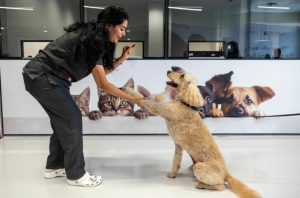Anxiety in pets—cats hissing under couches, dogs quivering in the laundry room, a cockatiel plucking out his own feathers—no one enjoys seeing their furry or feathered sidekicks in distress. That’s why theanimalcentral.com has been chatting about the unexpected ways anxiety can sneak up on animals. From thunder rumbling through the night to the silent terror of a turned-on vacuum, our pets sometimes mirror the stress of our modern lives in strange (and sometimes hilarious) ways.

Think your chihuahua is just being dramatic? Think again. Studies show separation anxiety affects up to 14% of dogs. The cat? She might refuse to use her litter box after you introduce a new lamp, or start overgrooming herself bald when guests visit. Even hamsters aren’t immune: they chew incessantly on their cage bars.
So, what sets them off? Changes. A new baby, a different routine, the ominous clang of construction outside—these shifts can turn a pet’s world upside down. Genetics may also play a part. Some breeds are more prone to anxious behaviors. A Border Collie needs more mental stimulation than you’d guess; a Sphinx cat may crave extra snuggles (or just a warm sweater).
The symptoms range from trembling to destructive chewing, excessive barking to hiding for hours. One story shared on our site revolves around a Labrador who ate half a couch when left home alone. Another reader wrote in about her canary who stopped singing altogether during a week of thunderstorms.
What can you do about it? Start with routine. Pets find comfort in knowing what happens and when. Even fifteen minutes of one-on-one play or training can help your critter feel settled. For some animals, dedicated products like plug-in pheromone diffusers or anxiety wraps offer relief. The science is promising: research links pheromones to reductions in canine and feline anxiety, and gentle pressure wraps mimic the soothing touch a mother would provide.
















